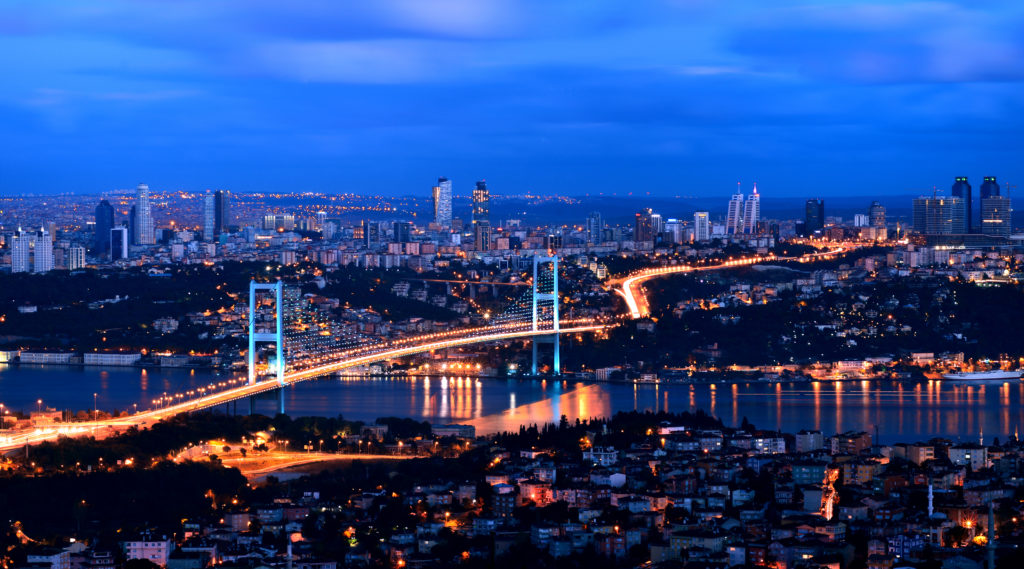I lived in Turkey for a year in 11th grade and I try to get back there as often as I can. At one time I was even fluent in Turkish, though my Turkish linguistic abilities are definitely not what they once were. Little known fact about Turkish: Kemal Ataturk (the name Ataturk was bestowed upon him by the Turkish parliament and it means “Father of the Turks). I mention Ataturk because, as part of his unrelenting and mostly successful efforts to modernize Turkey, he brought in linguistics to simplify the Turkish language so as to increase literacy. On this he truly succeeded and I often tell people how I can teach them to read Turkish (not understand it) in 1 minute: Every letter sounds as you would expect it to sound and everything is phonetic. My name is Daniel: Danyal. And I like watching the television: Televizyon. C with a cedilla under it is pronounced “ch” and s with a cedilla under it is pronounced “sh.” There you have it.
I am writing about Turkey today because I just read a Reuters article, IKEA to shift more production to Turkey to shorten supply chain, on companies moving their China manufacturing from China to Turkey so as to reduce shipping costs and reduce their China risks. See China Manufacturing is Riskier Than Ever: What to do to Reduce YOUR China Manufacturing Risks. Long ago, we decided that if we saw something three times that we deemed relevant to our readers, we would write about it. Twice in the last month we have worked with European clients to get them set up to move some of their manufacturing to Turkey. See How to Move Your Manufacturing Out of China Safely. This article makes for three.
The article starts out talking about how IKEA will be moving “more production” to Turkey to reduce the problems it has been having with “global supply chains and increased shipping costs.” The head of Ikea Turkey said that “We all saw in the pandemic that diversification is so important” and “it might not be a good strategy to produce items in one country and then try to transport them all around the world”.
You can say that again!
He then stated how the cost to ship a container from Asia had climbed to $12,000 from $2,000 before the COVID-19 outbreak and it is simply “more rational” to manufacture Ikea products in Turkey where they will be “closer to where they are sold.” If you are getting prices of anything close to $12,000 per container to ship your products from China to Europe, you are doing incredibly well and those costs are considerably higher to get a container from China to the United States.
The article goes on to note how “IKEA’s move follows similar steps by other European brands such as Benetton, which is bringing production closer to home by boosting manufacturing in Serbia, Croatia, Turkey, Tunisia and Egypt with the aim of halving production in Asia.”
Let’s face it, nearshoring is THE manufacturing trend right now. I can remember maybe a year or so ago attending a session put on by one of the big banks regarding global manufacturing. At that event, a very high level executive at one of the 2-3 largest international warehouse companies talked about how they were seeing manufacturing moving from China to other parts of the world. This executive stressed how his company was “location-neutral” because they have warehouses pretty much everywhere. This is something we are constantly stressing about our law firm as well when it comes to the legal work involved with international manufacturing — much to the chagrin of some of our more China-centric blog readers, who seem view our touting the rest of the world as a form of heresy.
Anyway, in response to the executive saying this, I asked him where his company was seeing this manufacturing going. His response was that they had been seeing a big uptick in nearshoring. I then asked him to list some countries and his response was as follows: “look at a map: Mexico and Poland.” A light went on in my head and I’ve been preaching Mexico to our American clients and Poland to our European clients pretty much ever since. Now Turkey is in my head too.
The Oxford Dictionary defines nearshoring as “The practice of transferring a business operation to a nearby country, especially in preference to a more distant one.” I would add that it nearly always involves some sort of cost savings element to it as well. Companies nearshore rather than onshore because the nearby country’s costs are less than their own country or the country to which they will be selling most of the products produced. Companies nearshore rather than keep their manufacturing more distant because they believe that bringing their manufacturing closer to home or to where most of their products are sold will reduce costs and/or risks.
Mexico and various other parts of Latin America tick all the boxes for American companies and for companies that sell their products to the United States. Poland and Trukey tick all the boxes for European companies and for companies that sell their products to Europe. As manufacturing in China continues to decline, manufacturing in Mexico, Poland, and Turkey will continue to rise.
What are you seeing out there?

























